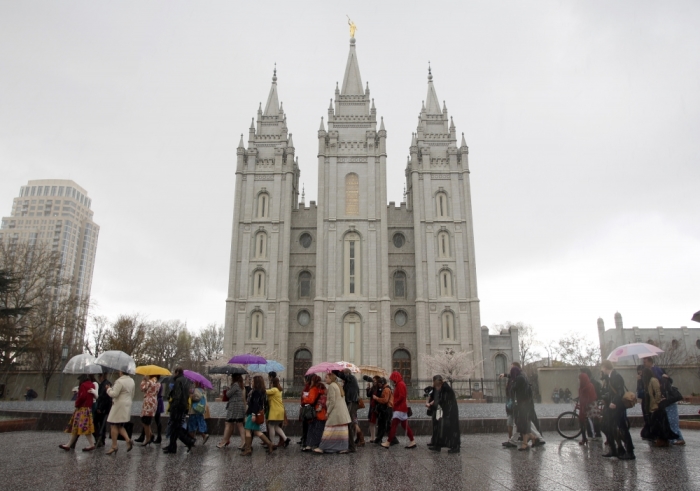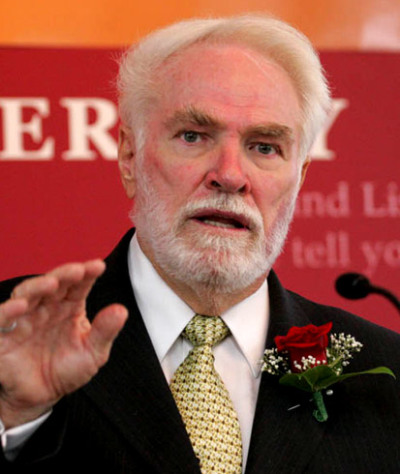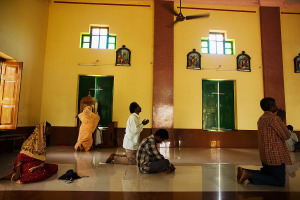How Do Religions Grow? Mormons 'Hidden in Plain Sight' (Part 6/8)

Over the last 150 years, the Church of Jesus Christ of Latter Day Saints (Mormons) has grown from a small insignificant sect in the deserts of the United States to become one of the most influential religious movements in the world.
Today the Mormons are trying to present themselves as just another branch of Christianity, but when one studies their theology carefully, it is apparent that there are major differences between the Mormons and most main Christian denominations. Their Church teaches that God is a resurrected man from a previous world who, through a plurality of wives, produced the human spirits that now inhabit this planet. Further, they believe that there are many gods and that LDS men and women are destined to become such.

In light of these facts, a question needs to be asked: With a theology that is so foreign to basic Christian beliefs, how is it possible that they are growing so rapidly in a Judeo-Christian environment. The answer is that they have developed and are using an outstanding Mega Strategy.
In their 1995 report, the Mormon Church reported they had 9,024,509 members with 47,318 missionaries working in over 300 missions worldwide. By 2013, the membership had grown to 14,441,346. In my discussion with their leadership, they claimed that they will have over 100,000 missionaries active by the year 2020. They continue to have a phenomenal growth rate, not only in the United States but also around the world.
At this point, let us look at what they are doing that gives them such positive results. I first became interested in the growth of the Mormons in the 1950s and was able to obtain a book with the title Hidden in Plain Sight. The basic premise of the book is that the Mormons have an excellent strategy that can be understood by all, but it is hidden because no one has taken the time to make a study of what they are doing. An interesting statement in that book is that they predicted that by the year 2000, there would be a Mormon president of the United States. Even at that early stage, political involvement was an important part of their strategy.
One of the reasons for their success lies in strategic advertising. Before Mormon missionaries appear at someone's door, the Church's high-tech public relations moves in with sophisticated advertising techniques, electric broadcasting, satellite dishes, print media, television, radio, movies, and today, the Internet. They recently boasted that their missionaries who use only social media are more successful than those who go from door to door. One study revealed that door-to-door missionaries convert about six people during their l8 to 24 month service while online missionaries see about 30 converts in the same period.
The genius of their missionary strategy is their effective use of university aged young people. These missionaries are usually male students who are willing to take two years out of their university studies to go on mission, often to a foreign land. They have so developed this program that these students provide most of the growth of the Church.
At this point we shall look at nine of the aspects of the work done by the university students.
Using University Aged Students
It is interesting to note that Mormon missionaries are usually between the ages of 18 to 22. The U.S. army has often stated that they want to recruit among those between the ages of 18 to 22. At an earlier age they are not mature, while after the age of 22 they now are planning for their future. The percentage of Mormon men who go on what they call their full-time proselytizing mission is 43% of all young Mormon men. They generally go between their sophomore and junior years at the university. The student-missionaries are expected to return and finish their studies, and they report that a very high number do return to school to get their degrees.
Financing of Missionaries
Most mission societies have very serious financial problems. For the Mormons, the families or the young people pay all their own expenses. When a boy is born into a Mormon family, his parents open up a savings account for their son's later mission, and instead of giving useless gifts, friends and family members contribute to this fund.
Preparedness
In most of their high schools, the Mormon Church has set up what they call a seminary. The young men who desire to go on mission must complete a specified number of courses before they can be chosen.
Orientation
Before they go on mission, the young men must attend a two-month orientation. Included in this course is a study of the language spoken where they will be working. This short time of language training can give the missionaries only a beginning knowledge, but they then must spend the first year on the field becoming fluent in the language. They are also taught church doctrine, for it is essential that those who represent the Church have a good knowledge of the Church's teachings and beliefs.
Field Structure
The basic plan is that two missionaries will work together. One of the missionaries has already spent one year on the field and is fluent in the language. His partner is a new missionary. The older missionary is responsible to help the new one learn the language as well as disciple him. After a year is up, the younger one takes over the position of the older. This way they also have continuity of witness to those they have contacted. With this method, there is always one missionary who was present when earlier visits were made in homes.
Use of Short Time Missionaries
Increasingly, the church is using more girls as missionaries. Many of them are only short term, and they are assigned to work with the missionaries already present in a specified area. They do different types of work, such as care for children, meeting the needs of the poor, and other types of help. When the people they are working with show an interest in their church, their contact information is given over to the more permanent male missionaries. The church is also now sending out a large number of senior adults who do a variety of work that is needed on the field.
Evangelism and Discipleship
Many mission societies use young people to do different types of work, but the Mormon missionaries have only two jobs: evangelism and discipleship. They live a very disciplined life, getting up early, fixing breakfast, having devotions, and then going out for evangelism and discipleship. They are not allowed many contacts from their homes during their missionary time since their work is well defined and they are busy the whole day.
International Contacts
As their Church expands to other countries, the local young men who become Mormons are also expected to do their mission work, thus they are able to expand their work in certain language areas. I was told by a Mormon leader that today the second language of their church is English while the language spoken by the majority of Mormons is Spanish.
Conclusion
Much more could be said about the strategy of the Mormons in their attempt to influence the world. I encourage you to make a study of their methods to see why they are growing. Their growth does not come from the leadership of the Holy Spirit or because they have the truth but rather from an excellent, well thought out strategy. The broader Christian Church can learn from them as we consider the development of Mega Missions for this new century.
Also see:
How Do Religions Grow? What Evangelicals Can Learn From Comparing Groups (Part 1/8)
How Do Religions Grow? Assemblies of God, Evangelism With Feeling (Part 2/8)
How Do Religions Grow? Jehovah's Witness, a Strict Taskmaster (Part 3/8)
How Do Religions Grow? The Gay Rights Movement's Mega Strategy (Part 4/8)
How Do Religions Grow? Islam's 4 Steps to Change the World (Part 5/8)
How Do Religions Grow? Southern Baptists, Reversing the Decline (Part 7/8)
How Do Religions Grow? Without a Vision, the People Perish (Part 8/8)




























